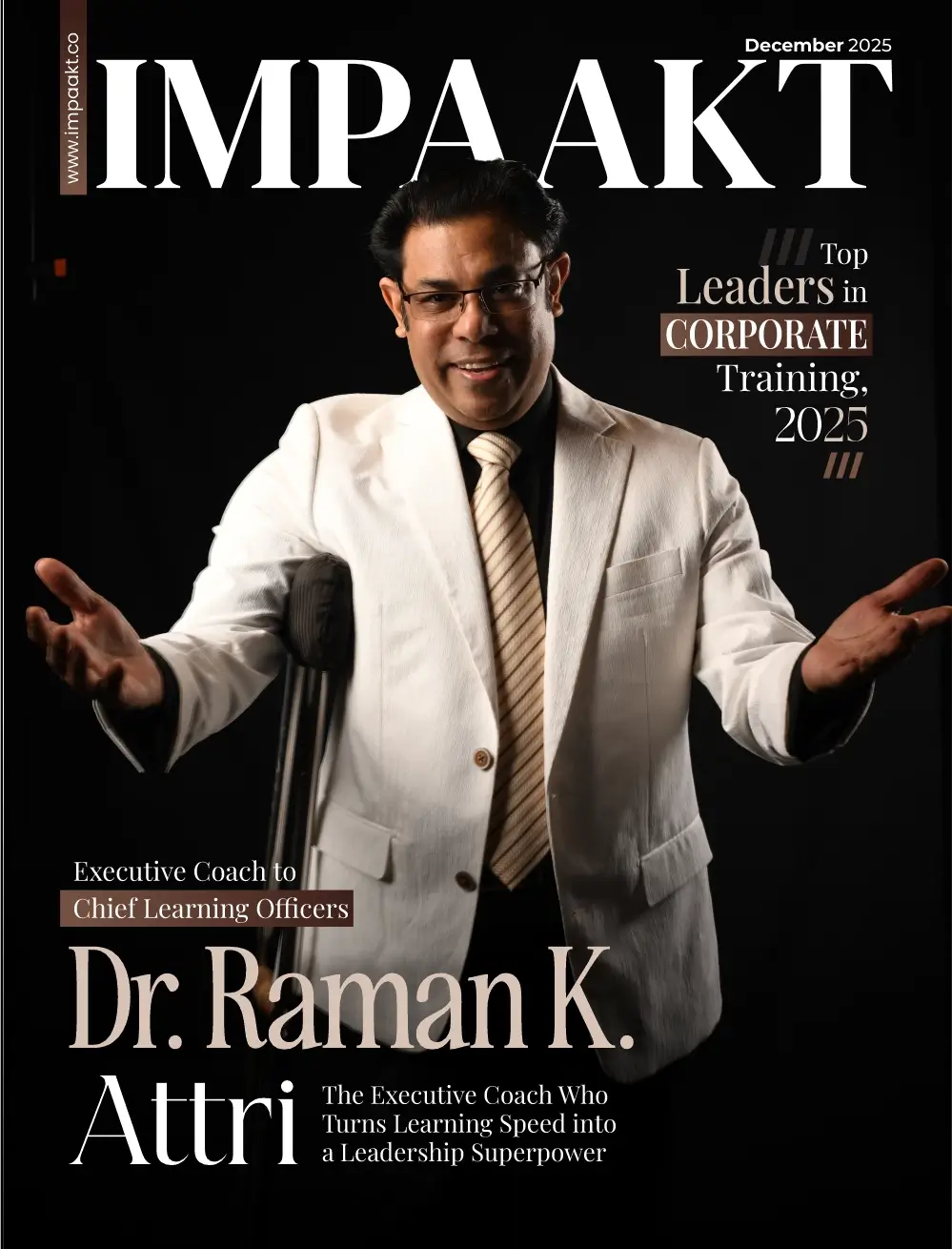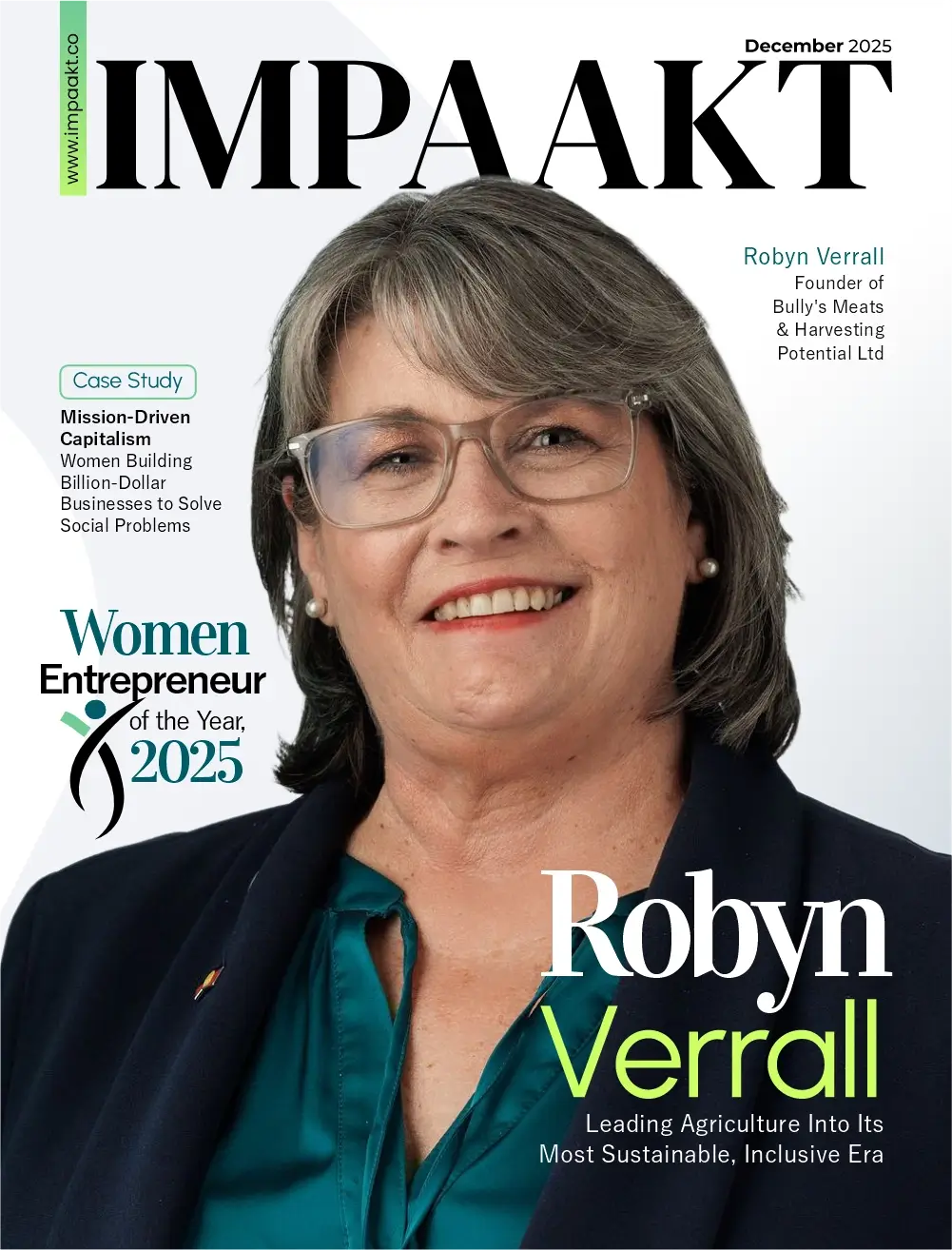Astronauts may be the most well-known space workers, but they hold very few jobs in the space ecosystem.
The logistics of space missions require a large team of workers with a variety of skills. “It takes the persistence and intelligence of designers, engineers, scientists, and storytellers to bring a project together,” says Rachana Reddy, Embedded Engineer at Reflex Aerospace.
As the host of the podcast “Those Space People,” Rachana aims to shed light on the diverse career paths within the space industry, as it’s not limited to rocket scientists or astronauts. She emphasizes the potential of what you’re good at, what you want to do, and what you already know may fit with a career in space.
In the following interview with IMPAAKT, Rachna Reddy takes us on an exciting journey of her life in the space industry. During the ride, she unfolds key insights for aspiring space explorers and professionals.
So, sit tight, as you dive into Rachna’s fascinating world!
Can you share an overview of your career journey in the space industry, highlighting the milestones and experiences that have shaped your expertise?
I’m always eager to share my experiences with individuals in the space industry or those looking to break into this field.
As for my own journey, I’d say it’s still unfolding, spanning over a decade. My fascination with space was ignited during my high school years when I participated in a space settlement design competition organized by NASA back in 2005-2006. Our team made it to the finals at the NASA Houston Space Center, and the whole experience was truly incredible.
Picture this: ten high school students forming a team, tasked with conceiving and designing a settlement from scratch. For a high school student like me, this challenge was way beyond my wildest dreams, and it’s what initially sparked my interest.
Subsequently, I gained admission to the Indian Institute of Space Science and Technology (IIST), an educational institute under the Department of Space. After that, I joined ISRO, where I worked for a while. However, I yearned to explore the global space landscape and understand how other space ecosystems function, so I ventured to Germany.
I pursued my master’s degree there and even had a brief stint with the German space agency, the German Space Center. Since then, I’ve been involved in several new space companies that I co-founded in Berlin, focusing on creating exciting and innovative projects in the field.
What motivated you to pursue a career in space engineering, and how has your passion for space exploration evolved over time?
My response might sound a bit unconventional, but the reason I remain dedicated to the space industry despite its challenges is my deep passion for space science fiction. I’m truly obsessed with devouring all kinds of space-related science fiction books and, primarily, watching sci-fi films and shows.
As an engineer, every time I engage in engineering discussions, write code, or carry out tasks related to my job, it feels like I’m edging closer to becoming one of those cool characters who travel through the universe on spaceships, fixing things, and having an encyclopaedic knowledge of everything on board. I often envision myself as part of a space mission far away in the galaxy, and that’s a significant source of motivation for me in the space industry.
Another, let’s say, less thrilling reason is my love for the evolution of the space industry itself. When I was pursuing my undergraduate studies at IST, back in the day, people would be puzzled when they learned about my interest in space. They’d question why I was traveling to Kerala, thinking I was studying nursing, as Kerala is known for its nursing programs. The transformation from that point to ISRO becoming widely recognized and celebrated across the country and around the world has been a remarkable journey. Being a part of this space wave for a decade has been a fascinating experience.
Furthermore, the space industry, especially in India and worldwide, is a relatively small and niche sector. This allows me to explore various dimensions beyond engineering. I delve into the dynamics of space law, the development of business cases, and the impact of space activities on geopolitics.
Take Starlink, for example. It’s not just a technological feat; it’s entangled with regulatory aspects, business considerations, economics, and geopolitics. Space is a realm where every aspect has far-reaching implications, extending well beyond the confines of engineering, and that’s what makes it so captivating for me.
Can you describe the work you’re currently doing with the space company in Berlin, and what are some of the exciting projects you’ve been involved in recently?
I work with a company called Reflex Aerospace, and our primary goal is to develop 300-kilogram class communication satellites. What sets us apart is our emphasis on expediting the design process. Traditionally, satellite development takes over five years, but we’re striving to accelerate this while maintaining high performance and ensuring rapid reconfigurability. This involves making interdisciplinary engineering decisions and working across various fields.
During my time at the German Aerospace Centre (DLR), I had the opportunity to contribute to an extraordinary mission. I wrote a piece of code for a sample return mission that is part of an international collaboration with JAXA, the Japanese space agency. This mission is scheduled to launch next September, and it involves exploring one of Mars’ moons, Phobos. My code is meant to help the rover and lander in finding a suitable spot on Phobos to collect samples. Subsequently, another spacecraft will retrieve these samples and bring them back to Earth, which is an incredibly exciting endeavor.
Can you discuss your experience in working with colleagues from different backgrounds and disciplines in the aerospace sector?
Working with individuals from diverse cultural backgrounds has been an incredibly enjoyable experience for me, and there are two key aspects to this. When we consider professional diversity, which includes people from various backgrounds such as engineering, science, or other fields, the most significant contrast lies in how we approach problem-solving.
What I find fascinating is that individuals trained as engineers, regardless of their cultural background, tend to approach problems in a remarkably similar manner. They share a common approach to tackling challenges. On the other hand, if we take someone with a scientific background, like a geologist working on satellite image processing or a physicist designing payloads, their problem-solving approaches can be quite distinct. There’s also a group of individuals in the space industry with non-technical backgrounds who bring a completely different perspective to problem-solving.
Culturally, aside from the subtle influences of their native languages on their English communication and presentation styles, I haven’t observed significant cultural differences. Most of the variations I’ve encountered are rooted in the individual’s educational background and their specific area of expertise.
How do you approach working with professionals from various fields such as scientists, engineers, mission planners to achieve goals and solve complex problems?
In a space mission, let’s consider a satellite mission as an example, there’s a diverse array of individuals involved, ranging from mission managers and project managers to engineers, structural analysts, and designers. This diversity is quite evident.
What’s notable in the space industry and the broader tech world is the increasing shift towards a common language that’s transitioning from English to code. This transformation is driven by the fact that virtually every person contributing to a project, whether in a technical or non-technical role, is using some form of software tool that requires code input.
Whether it’s using MATLAB for simulations as a mission planner or any other software tool, code has become a shared medium of communication. I would say that software is evolving into this universal language, making interactions smoother and more efficient.
Moreover, there are many professional tools, and even in hardware-focused companies like the one I’ve worked with and the one I’m currently involved in, we still need to load code into the hardware for testing and verification. Interestingly, due to the pandemic, we’ve had to adapt and set up satellite systems remotely, controlling them from afar. This is something that, perhaps, five years ago, people in the space industry wouldn’t have imagined possible for hardware-related tasks.
The pandemic has ushered in a significant change, and we now have a plethora of software tools that enable remote collaboration, allowing individuals to work together, share resources, and manage time effectively. These developments are gradually leading us toward embracing a common language, which is some form of code.
So, I’d say that the commonality among people from different disciplines is this shift towards code as a shared language.
Indeed, the COVID-19 era has brought about substantial changes, not only in the space industry but also across various other sectors, essentially advancing us five years ahead in terms of remote work and technology adoption.
In the context of satellite development, what emerging technologies or trends do you find most exciting and how do you see that shaping the future of space exploration?
When we examine the significant challenges, which can also be viewed as opportunities, in satellite development, one major challenge is dealing with supply chain disruptions. This issue has affected the entire electronics industry due to a multitude of reasons, including geopolitical factors and resource shortages. Managing these disruptions is a substantial challenge.
Another critical challenge lies in designing hardware-agnostic architectures. Traditionally, the approach has been to select a specific computer chip or microcontroller, freeze the hardware, and then develop software tailored to that specific hardware. However, this approach no longer suffices because each chip has unique characteristics, interfaces, processing power, and internal architecture.
This strong hardware-software interdependency leads to delays and reiterations when it comes to designing and deploying satellite systems. Designing hardware-agnostic solutions that can quickly adapt to various chip architectures is a significant challenge that the industry is addressing.
Cybersecurity is another major challenge. Designing satellite systems that are resilient against various cyber threats, from component-level vulnerabilities to system-wide attacks, is crucial.
Furthermore, the trend in satellite development is shifting towards high-performance satellites. There’s a growing need for onboard processing, reducing the reliance on transmitting data to the ground for processing. For instance, satellite images often have cloud cover, making data collection challenging. New designs aim to remove or work around these clouds, involving advanced techniques such as cloud removal or cloud detection.
Edge computing is another aspect gaining prominence. This involves processing data on the satellite itself, requiring enhanced computational power.
Zooming out a bit, one of the most significant issues facing the space sector is the problem of space debris. The space environment is cluttered with space junk, and dealing with this issue is a substantial challenge. Space situational awareness, or SSA, is a critical aspect, allowing us to monitor potential collisions or interceptions.
Some companies are actively working on space debris removal methods, which can range from capturing debris with nets to using magnetic techniques. However, these methods often have dual-use applications and can be perceived as potential weapons, adding complexities to the situation.
Space law, geopolitics, business cases, and international cooperation all play crucial roles in addressing the space debris challenge. These are just a few of the most intriguing and daunting issues that I find compelling in the field of satellite development.
Can you help us understand the emerging opportunities that are there in the field of space science or exploration, especially for aspiring enthusiasts who would like to have a career in space?
Before embarking on a career in the space industry, it’s essential to recognize that space-related roles may not be as financially rewarding as some other sectors, like software development. Comparing salaries at companies like Google in the US to those at SpaceX illustrates this difference. Space is generally characterized by narrow profit margins, and unfortunately, these margins don’t often translate into high employee salaries.
However, if one remains passionate about space, there are numerous opportunities available. As the host of the podcast “Those Space People,” I aim to shed light on the diverse career paths within the space industry, as it’s not limited to rocket scientists or astronauts.
Broadly, careers in space can be divided into three main categories. The first is upstream, which involves everything related to what goes up into space, including building satellites and launch vehicles. In this realm, engineering roles are diverse and encompass structural engineering, thermal engineering, electronics engineering, computer science expertise, and more.
Designing rockets involves guiding, navigating, and controlling the satellite’s orbit, which requires expertise in areas like materials engineering and propulsion systems.
The second category is downstream, which deals with processing data that comes from satellites, disseminating this data, and extracting valuable insights and analytics. Careers in this sector can include data scientists, machine learning and AI experts, or even individuals with domain knowledge like geologists who can fine-tune algorithms for specific tasks.
While engineering know-how is often beneficial, there’s also room for non-technical backgrounds in sales, marketing, project management, and other roles. Many skills can be acquired on the job.
For those aspiring to enter the space industry, having at least a bachelor’s degree is advisable. If you’re considering pursuing a master’s degree, it’s often recommended not to opt for highly space-centric programs. Many of these programs are designed for professionals with strong engineering backgrounds who want to transition into the space industry.
Instead, gaining experience in your core engineering or science field, such as computer science, before making the transition to the space sector can be a more effective path. Building a strong foundation in engineering basics and tackling engineering challenges can make your transition into the space industry more rewarding.
While space careers may not offer the highest financial rewards, they offer a wealth of opportunities, and approaching them strategically with the right educational background and experience can be highly fulfilling in the space sector.
Space exploration often involves international collaboration. How have you navigated working on projects with global partners, and what have you learned from these experiences?
Of course, when it comes to the space industry, the people factor plays a crucial role. You see, even though we have professionals from all around the world, culture significantly influences how we approach work.
One striking example of this is how different cultures handle hierarchy. In Germany, you’ll often find a very flat organizational structure, which allows individuals more decision-making power. It’s an empowering setup, but it comes with a lot of responsibility.
What’s interesting, though, is that in Germany and many European countries, when you make a decision, even if it turns out to be wrong or causes problems, people usually give you the benefit of the doubt. They assume that you had good intentions and focus on preventing such issues in the future. In some other cultures, it’s more punitive when mistakes happen.
Now, let’s shift gears to my podcast, “Those Space People.” The reason I started it was because I realized many people, even beyond the space industry, have a limited view of the career possibilities in this field. They often think it’s all about being a rocket scientist or astronaut. But there’s so much more to it.
I wanted to showcase the diverse career paths available in the space industry. I’ve had guests who are software engineers, space archaeologists, astronomers, and more. It’s not just about technical roles; there’s room for people from different backgrounds and expertise. I also make an effort to include voices from regions typically underrepresented in the space sector.
The beauty of space technology is that it can be applied to solve various problems globally, regardless of cultural or geographic differences. It’s a powerful tool that can address a wide range of challenges. And that’s what I find fascinating about this field.
In your opinion, what role does public engagement and education play in the advancement of space exploration, and how can individuals like yourself contribute to inspiring the next generation of space enthusiasts?
To inspire the next generation, we should focus on showcasing how space can be a valuable tool in addressing issues that directly affect them, such as climate change. Unlike previous generations, Gen Z is particularly concerned about specific problems. So, targeting challenges that resonate with them and allowing them to devise solutions is key.
For the upcoming generation, activities like competitions and gamification work well. Creating engaging dynamics through games appeals to their interests and can be effective in capturing their attention and enthusiasm. Competitions, even at the high school or elementary school level, can tap into the intelligence of each generation.
In India, besides the government’s involvement through ISRO, private space companies are also playing a role in popularizing space. Initiatives like podcasts can contribute significantly by reaching a wider audience and discussing space-related topics regularly.
Networking groups provide opportunities to engage with schools and encourage diverse participation, bridging gaps in gender diversity and involving people from various backgrounds. Just as diversity is essential in science, technology, and medicine (STM), it is crucial in the space industry to ensure a variety of voices contribute to decision-making processes.











